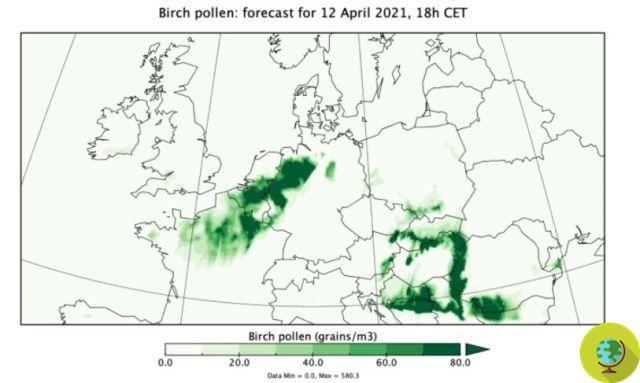Copernicus Atmosphere Monitoring Service gives forecasts on pollen concentrations over the next 4 days. Help for allergy sufferers
Don't store avocado like this: it's dangerousSpring is a season that many people look forward to and that just as many fear. We are talking about allergy sufferers, who are faced with the many discomforts caused by pollen every year. However, the Copernicus Atmosphere Monitoring Service (CAMS) of the European Union comes to their aid, able to provide pollen forecasts for the next 4 days.
CAMS can really make a difference for the many allergy sufferers who, in our country and beyond, suffer from the arrival of pollen. The Copernicus atmosphere monitoring service is in fact able to make forecasts, up to the next 4 days, on the spread of the most common types of pollen.
To provide this valuable information to allergy sufferers, the system uses sophisticated computer models, capable of providing reliable forecasts on the spread of pollen.
More specifically, CAMS scientists use numerical modeling to calculate pollen concentrations of birch, olive, grass, ragweed and alder, the most common species.
The numerical data associated with CAMS pollen concentration predictions are updated daily, cover the next 4 days and are freely accessible from the CAMS Atmospheric Data Store.

@Copernicus Atmosphere Monitoring Service/ECMWF
Knowing the pollen concentrations in advance allows allergy sufferers from all over Europe (about 100 million people) to start treatment promptly and limit outdoor activities as much as possible on the days when they are highest.
As Vincent-Henri Peuch, director of Copernicus Atmosphere Monitoring Service (CAMS) said:
“With our very advanced numerical modeling systems and our collaboration with European pollen observing organizations, we are at the forefront of informing the medical community and allergy sufferers about the expected changes in pollen levels in the coming days. Therefore, the quality of the forecasts is of primary importance and we constantly evaluate our forecasts and look for ways to improve them and better respond to the needs of our users ”.
Incidentally, a study involving CAMS scientists at the Finnish Meteorological Institute also suggests a correlation with the pandemic: higher concentrations of pollen in the air are associated with increased rates of COVID-19 infection. In practice, from this study, it seems that pollen, together with humidity and high temperatures, also explain the infection variability rate of 44%.
Fonte: Copernicus Atmosphere Monitoring Service (CAMS)
Read also:
- Pollen allergy season always starts earlier (and it will get even worse)
- Allergies: the pollen season has lengthened by 30 days in recent years due to pollution
- Pollens, never as high as in this season. A nightmare for allergy sufferers, at the time of the coronavirus
- The 10 most allergenic pollens


























